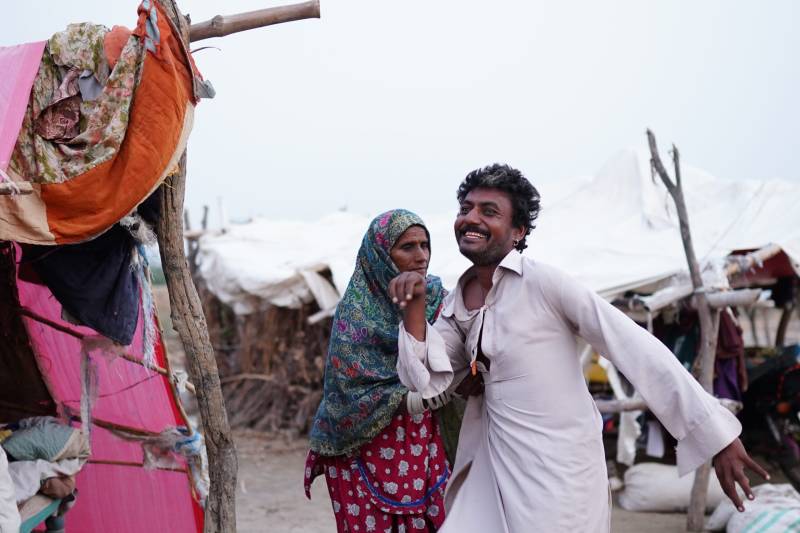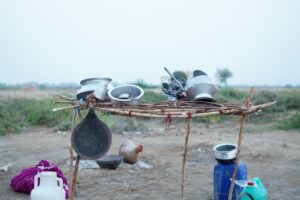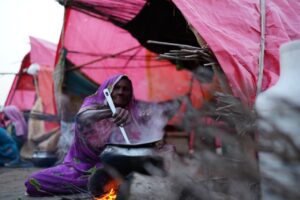
Natural calamities and multifaceted emergencies during the past three months have disrupted the lives of flood victims and affected the people of Sindh of 23 districts and their routines, which will continue to affect their lives for many years to come.
The flood this year has set a different example of a flood in over forty-years of history, the dimensions of the problems have also changed, both of which will further increase poverty rate. Poverty severity measures the depth of deprivation faced by those living below the poverty line. This calamity has put Sindh and it 23 districts in the misery of suffering.
 People are depending on temporary aid provided by NGOs and all of them are not fulfilling their rehabilitation to any extent. People have gone into more trouble, distress and anxiety. A consistent strategy is missing in all of this. Yet the same amount of tax is taken from the all people of Sindh and there is no uniformity in equity. In other countries, whenever a disaster occurs, the government compensates them, but here it is scenario is completely different and unfavourable for the flood affected souls.
People are depending on temporary aid provided by NGOs and all of them are not fulfilling their rehabilitation to any extent. People have gone into more trouble, distress and anxiety. A consistent strategy is missing in all of this. Yet the same amount of tax is taken from the all people of Sindh and there is no uniformity in equity. In other countries, whenever a disaster occurs, the government compensates them, but here it is scenario is completely different and unfavourable for the flood affected souls.
"My house was razed to the ground, crops washed away and I even lost my two goats and a calf. That night of August 17, 2022 was terrible. I carried my two children in my arms and two on my shoulders. We took refuge in the nearby empty school building, before the flood water reached there as well. We all were drenched from head to toe. My wife caught fever on that night," said Kheran from Umerkot.
For successful future flood risk management, a strong long-term strategy is better than empty and useless talk or investing resources without mapping and there is also the need to think of something innovative.
In Sindh, the flood occurs in areas which are low lying and all the houses there are made of dirt and mud. In every district there is also an urban population whose houses are paved and built as per DRR aspect and never affected. If urban areas are not affected in every flood, then why not we are thinking about these rural areas and attempt to find a permanent solution for them too?
A sustainable housing strategy will facilitate future risk mitigation to Sindh as well as Pakistan. If we don't think like this, this time, we will suffer even more. According to the global forecast, there will be more flood risks and intensity in the coming years, which will put us back in the same terrible situation.
While the government is conducting a survey of these affected district through Tapidars or Patwaris, the details of damages and losses of all these affected houses will also come to the Deputy Commissioner. The damage should be seen.
After every three years there is a flood in our Sindh, we now have three long years in which we can think in more positive and innovative way that will benefit our people and their innocent children. We can learn to do three things to minimise the risks of floods in the future.
Many people want to go back to their normal life, but they are unable to go, they do not have enough resources, suitable options to do anything in their capacity. There is a dire need for the government to learn from past experiences and address them appropriately.
The flood this year has set a different example of a flood in over forty-years of history, the dimensions of the problems have also changed, both of which will further increase poverty rate. Poverty severity measures the depth of deprivation faced by those living below the poverty line. This calamity has put Sindh and it 23 districts in the misery of suffering.
 People are depending on temporary aid provided by NGOs and all of them are not fulfilling their rehabilitation to any extent. People have gone into more trouble, distress and anxiety. A consistent strategy is missing in all of this. Yet the same amount of tax is taken from the all people of Sindh and there is no uniformity in equity. In other countries, whenever a disaster occurs, the government compensates them, but here it is scenario is completely different and unfavourable for the flood affected souls.
People are depending on temporary aid provided by NGOs and all of them are not fulfilling their rehabilitation to any extent. People have gone into more trouble, distress and anxiety. A consistent strategy is missing in all of this. Yet the same amount of tax is taken from the all people of Sindh and there is no uniformity in equity. In other countries, whenever a disaster occurs, the government compensates them, but here it is scenario is completely different and unfavourable for the flood affected souls."My house was razed to the ground, crops washed away and I even lost my two goats and a calf. That night of August 17, 2022 was terrible. I carried my two children in my arms and two on my shoulders. We took refuge in the nearby empty school building, before the flood water reached there as well. We all were drenched from head to toe. My wife caught fever on that night," said Kheran from Umerkot.
 As the manifestation of different types of disasters is a natural process, climate change is affecting the whole world, but with our existing approaches by investing truthful resource we need to develop some long-lasting thought process that can prevent future disasters to some extent.
As the manifestation of different types of disasters is a natural process, climate change is affecting the whole world, but with our existing approaches by investing truthful resource we need to develop some long-lasting thought process that can prevent future disasters to some extent.
For successful future flood risk management, a strong long-term strategy is better than empty and useless talk or investing resources without mapping and there is also the need to think of something innovative.
In Sindh, the flood occurs in areas which are low lying and all the houses there are made of dirt and mud. In every district there is also an urban population whose houses are paved and built as per DRR aspect and never affected. If urban areas are not affected in every flood, then why not we are thinking about these rural areas and attempt to find a permanent solution for them too?
A sustainable housing strategy will facilitate future risk mitigation to Sindh as well as Pakistan. If we don't think like this, this time, we will suffer even more. According to the global forecast, there will be more flood risks and intensity in the coming years, which will put us back in the same terrible situation.
While the government is conducting a survey of these affected district through Tapidars or Patwaris, the details of damages and losses of all these affected houses will also come to the Deputy Commissioner. The damage should be seen.
After every three years there is a flood in our Sindh, we now have three long years in which we can think in more positive and innovative way that will benefit our people and their innocent children. We can learn to do three things to minimise the risks of floods in the future.
- One is to learn to build concrete houses on DRR aspects with the help of government and other donor agencies.
- Second, we have to think about the proper drainage of flood water, we learn to drain the flood water in two ways; through digging huge pit through the help of people at the level of the village, and we have to try that there is an external drainage possible option for pull out of this flood water. As in current flood situation the stagnant water posed danger of the spread of different diseases. People had started falling sick of malaria, typhoid, diarrhea and many other skin ailments.
- Thirdly, we need to look at them from their psychological aspects, in these calamities they get worried, especially their children who are the future of Pakistan.
Many people want to go back to their normal life, but they are unable to go, they do not have enough resources, suitable options to do anything in their capacity. There is a dire need for the government to learn from past experiences and address them appropriately.

